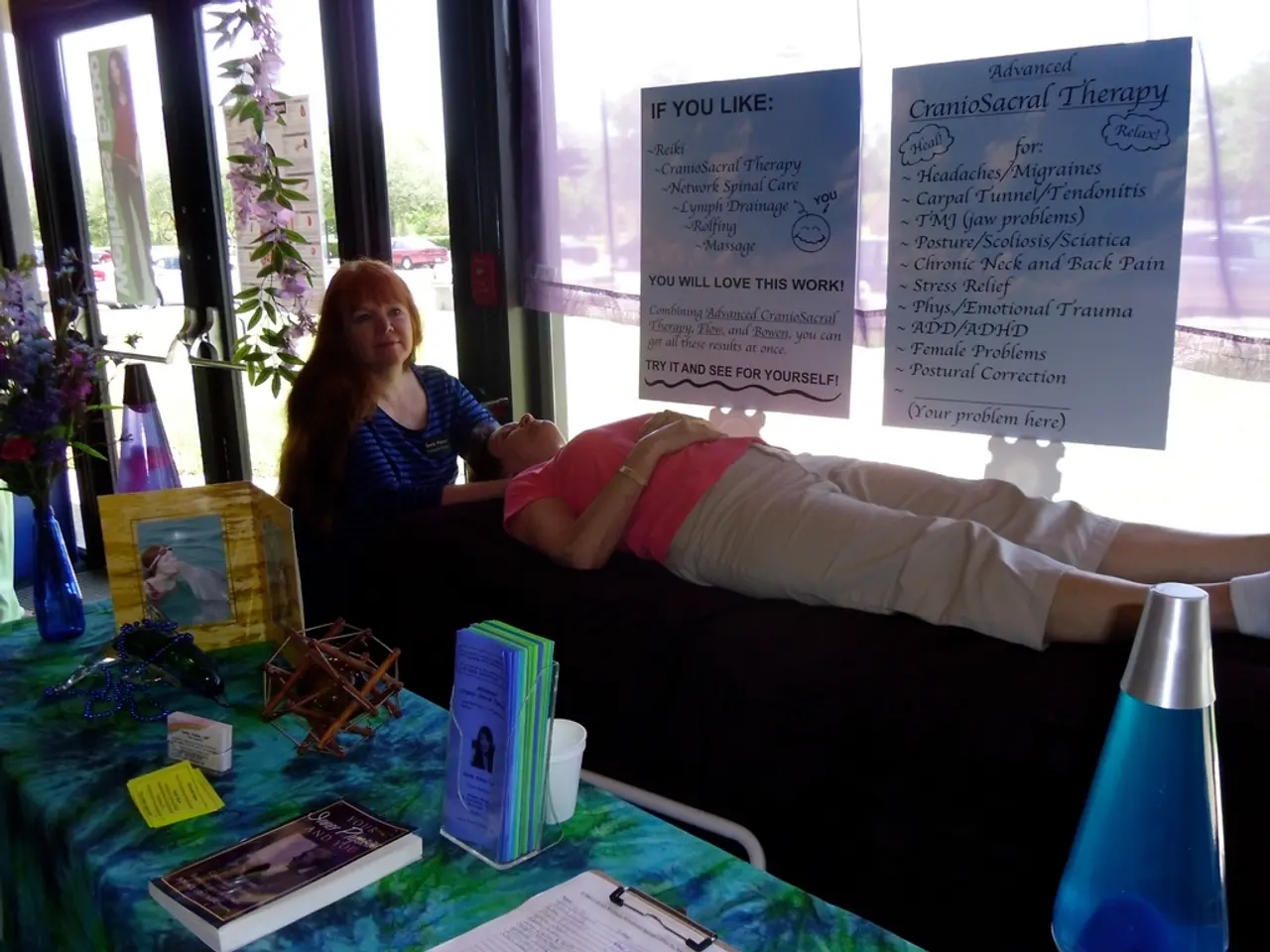Methods for Alleviating Social Anxiety Disorder (SAD)
Social Anxiety Disorder (SAD) is a mental health condition that affects many individuals, characterised by intense anxiety and excessive self-consciousness in social situations. This disorder can severely impact a person's ability to form relationships, succeed at work or school, and live a fulfilling life if left untreated.
Recognising the Problem
People with SAD often experience a persistent, intense fear of being watched and judged by others, and doing something embarrassing. These fears can lead to avoidance of social situations, which only serves to reinforce the anxiety.
Seeking Treatment
Seeking treatment is critical to overcome distressing symptoms, regain confidence, and improve quality of life. The most common first-line treatments for SAD in Germany are cognitive-behavioral therapy (CBT) and selective serotonin reuptake inhibitors (SSRIs), with CBT being the primary psychotherapeutic approach used in clinical practice.
Cognitive-Behavioral Therapy (CBT)
CBT is considered the gold standard psychological treatment for SAD. It targets distorted thoughts and maladaptive behaviors that maintain social anxiety. CBT uses several evidence-based techniques, including exposure therapy, cognitive restructuring, social skills training, mindfulness, and mindfulness-based cognitive therapy (MBCT).
Acceptance and Commitment Therapy (ACT)
ACT is another form of psychotherapy that focuses on accepting difficult thoughts and feelings rather than trying to change or avoid them, while committing to actions that align with one's values. Specific techniques used in ACT for SAD include mindfulness exercises, metaphorical stories and experiential exercises, values clarification, making commitments to concrete goals, and using anxiety exposure strategies if needed.
Medications
Several types of medications are commonly used to treat SAD, including SSRIs, serotonin-norepinephrine reuptake inhibitors (SNRIs), and certain antidepressants. Examples of SSRIs that have demonstrated efficacy in both short-term and long-term treatment of SAD include escitalopram, paroxetine, and sertraline. SNRIs such as venlafaxine XR have also shown efficacy in treating SAD in both the short term and long term. Anti-anxiety medications such as benzodiazepines are sometimes used on a short-term or as-needed basis.
Psychodynamic Therapy
Psychodynamic therapy can help people with SAD by uncovering the unconscious roots of their anxiety, focusing on early childhood experiences like insecure attachment with caregivers or lack of nurturance. A meta-analysis suggested that psychodynamic therapy can be used as an alternative treatment to CBT in the treatment of SAD.
Self-Help Techniques
Several self-help techniques can be useful for managing SAD symptoms. These include overcoming avoidance, dropping safety behaviors, practicing self-care, breathing retraining, progressive muscle relaxation, celebrating small victories, building a support network, and considering factors like individual vs group therapy, In Vivo vs Virtual Reality Exposure Therapy, homework between sessions, number of sessions, medication, support groups, and relapse prevention planning.
In conclusion, treating SAD is a multifaceted process that often involves a combination of therapy and medication. Whether you choose CBT, ACT, or psychodynamic therapy, the goal is to increase psychological flexibility, reduce external shame, and improve emotion regulation. With the right treatment, it's possible to regain control over social anxiety and live a more fulfilling life.
Read also:
- visionary women of WearCheck spearheading technological advancements and catalyzing transformations
- Recognition of Exceptional Patient Care: Top Staff Honored by Medical Center Board
- A continuous command instructing an entity to halts all actions, repeated numerous times.
- Oxidative Stress in Sperm Abnormalities: Impact of Reactive Oxygen Species (ROS) on Sperm Harm








